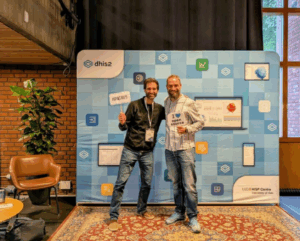
Universal Health Coverage Day on 12 December marks the anniversary of the United Nations’ historic endorsement of universal health coverage (UHC). UHC means that all people have access to the full range of quality health services they need, when and where they need them, without financial hardship. To achieve this, information on the current status of UHC around the world is key. This is the aim of the Universal Health Coverage Policy Watch (UHCPW), a public platform providing up-to-date information on coverage policy in Europe and central Asia. The target public is policymakers, policy advisors, analysts, researchers, students, civil society organisations and journalists.
The platform has been designed by the WHO Barcelona Office, a centre of excellence in health financing for universal health coverage (UHC). It works with Member States across WHO’s European Region to promote evidence-informed policy making and offers WHO training courses on health financing. The Office assesses country and regional progress towards UHC by monitoring financial protection – affordable access to health care. EyeSeeTea and Lushomo have implemented it.

The Universal Health Coverage Policy Watch (UHCPW)
UHC Watch is an innovative platform with the goal to fill an information gap. This platform uses DHIS2 as a repository of all the technical evidence the WHO Barcelona Office generated in the last 10 years for +40 European and central Asian countries (financial protection numbers, policy analysis, technical reports, methodological guidelines). UHC Watch is also more than a data repository. It is a dynamic web portal that exposes critical health financing evidence from the region. It is crucial for policymakers, advisors, academics, journalists, and civil society advocacy groups to formulate informed decisions and policies. UHC watch leverages the capabilities of the DHIS2 framework. It operates on the WHO Integrated Data Platform (WIDP), a significant DHIS2 initiative involving eight WHO departments since 2018.
The platform uses React and JavaScript to turn metadata and data inside WIDP into a public web portal. UHC Watch has a user-friendly interface, allowing users to access country profiles for quick insights on how they perform in achieving UHC and what they can do to improve. The platform also includes advanced functionalities like the Indicator and Policy Explorers. These tools enable users to delve deeper into data, monitor trends and perform comparative analyses across different countries and years.

Additionally, the platform facilitates the generation of customised analyses, where users can export data and graphics, aiding in a more nuanced understanding of the health financing landscape. UHC Watch is more than an informational platform; it is a beacon guiding the journey towards universal health coverage in Europe and central Asia. It aims to become the one-stop place for monitoring UHC in the region and to demonstrate how DHIS2 and technological tools can facilitate disseminating and translating technical evidence into health policies to improve people’s lives.
UHC Day
4.5 billion people still do not have access to essential health services. Over the last 20 years, financial protection has worsened, with 2 billion people experiencing financial hardship and 1.3 billion people pushed into poverty due to health expenses. On 12 December 2012, the United Nations General Assembly endorsed a resolution urging countries to accelerate progress toward universal health coverage (UHC) – the idea that everyone, everywhere should have access to quality, affordable health care. On 12 December 2017, the United Nations proclaimed 12 December as International Universal Health Coverage Day (UHC Day)

International Universal Health Coverage Day aims to raise awareness of the need for strong and resilient health systems and universal health coverage with multi-stakeholder partners. Each year on 12 December, UHC advocates raise their voices to share the stories of the millions of people still waiting for health, champion what we have achieved so far, call on leaders to make bigger and smarter investments in health, and encourage diverse groups to make commitments to help move the world closer to UHC by 2030.
At EyeSeeTea, we hope to contribute to #HealthForAll through our open source DHIS apps, mostly used in low-resources countries, and by working with our amazing customers and partners around the world.


